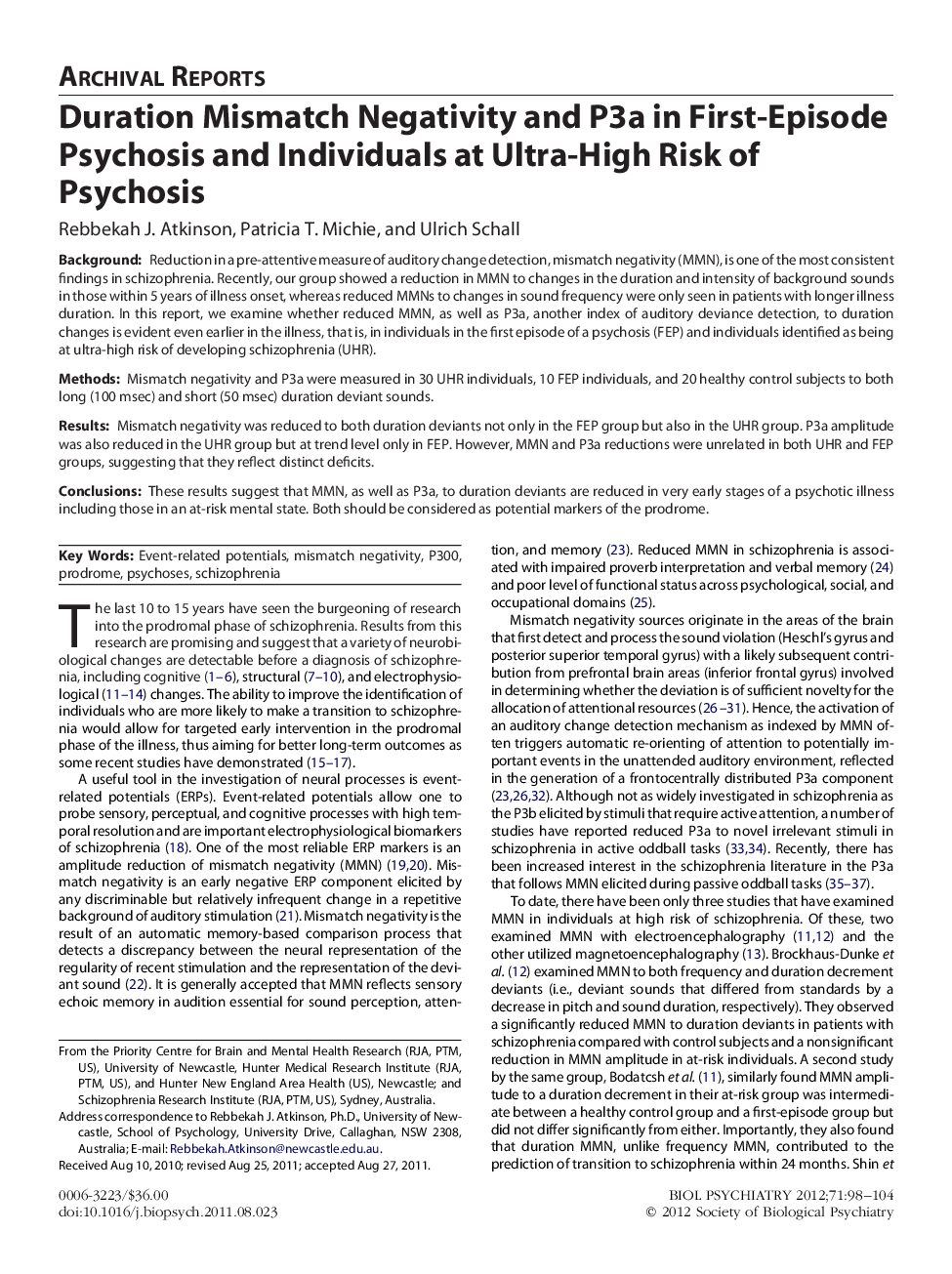| Article ID | Journal | Published Year | Pages | File Type |
|---|---|---|---|---|
| 4178351 | Biological Psychiatry | 2012 | 7 Pages |
BackgroundReduction in a pre-attentive measure of auditory change detection, mismatch negativity (MMN), is one of the most consistent findings in schizophrenia. Recently, our group showed a reduction in MMN to changes in the duration and intensity of background sounds in those within 5 years of illness onset, whereas reduced MMNs to changes in sound frequency were only seen in patients with longer illness duration. In this report, we examine whether reduced MMN, as well as P3a, another index of auditory deviance detection, to duration changes is evident even earlier in the illness, that is, in individuals in the first episode of a psychosis (FEP) and individuals identified as being at ultra-high risk of developing schizophrenia (UHR).MethodsMismatch negativity and P3a were measured in 30 UHR individuals, 10 FEP individuals, and 20 healthy control subjects to both long (100 msec) and short (50 msec) duration deviant sounds.ResultsMismatch negativity was reduced to both duration deviants not only in the FEP group but also in the UHR group. P3a amplitude was also reduced in the UHR group but at trend level only in FEP. However, MMN and P3a reductions were unrelated in both UHR and FEP groups, suggesting that they reflect distinct deficits.ConclusionsThese results suggest that MMN, as well as P3a, to duration deviants are reduced in very early stages of a psychotic illness including those in an at-risk mental state. Both should be considered as potential markers of the prodrome.
